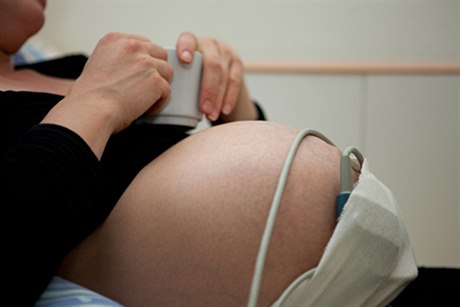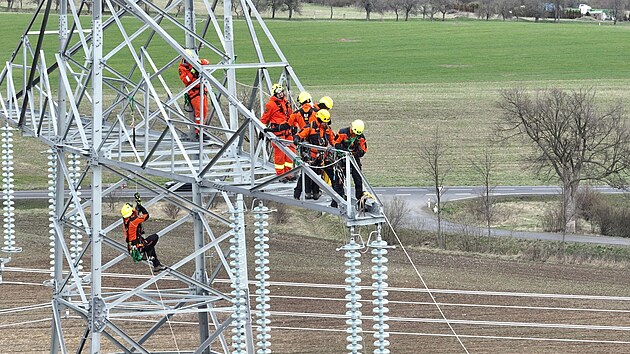The level of employment for women across the EU-27 drops for each child that the woman has, according to statistics released by Eurostat, the statistical arm of the EU, to mark the International Women’s Day on March 8.
The Czech Republic follows the same trend, with employment for childless women between 25 and 54 at 84.4 percent, dropping to just 52.6 percent for women with three or more children. This is even an sharper decline than the EU average, which starts at 75.8 percent employment for child and falls to 54.7 percent for a woman with three children, based on 2009 figures. ‘The employment rate for women decreases as the number of children increases.’
“The pattern observed on an EU level, that the employment rate for women decreases as the number of children increases is confirmed in a majority of Member States. However, the pattern is slightly different in Cyprus, Hungary, the Netherlands and Finland, where the rate decreases for the first child but then increases for the second,” Eurostat said in its report.
“In Latvia, Lithuania, Portugal and Romania, women with one child are more often in employment, and the employment rate only starts to drop for women with a second child. In Belgium and Slovenia, the employment rate starts to drop with the third child,” it said. Figures for Sweden and Denmark were not included in the report.
Dads work more, at first
The EU trend for men is quite different, with the percent of employment for men rising with the first and second child, then dropping for the third. “For men, the EU pattern is confirmed in nearly all Member States,” the Eurostat report said. Czech childless men start at 86.6 percent employment and the rate rises to 96.1 percent from men with two children. This drops to 89.5 percent for three or more children.
“Employment rates for women both with and without children were lower than for men in all Member States, except for women without children in Estonia, Ireland, Latvia, Lithuania, Hungary and Finland,” the report said.
Nine times as many single moms as single dads
There were 4.3 million household in the Czech Republic in 2009. Couples with and without children made up 49.6 percent. Single women without children made up 16.4 percent of Czech households, while single women with children were 4.5 percent. By contrast, single men with children were 0.5 percent. The EU average for single moms was 3.7 percent, while single dads was also 0.5 percent.‘The proportion for men was 1 percent or less in all Member States.’
“The share of single women with children ranged from less than 2 percent in Greece, Finland, Romania and Malta to 7 percent in Estonia and the United Kingdom and 6 percent in Ireland, Latvia and Lithuania, while the proportion for men was 1 percent or less in all Member States,” the report said. Across the EU-27, excluding Sweden and Denmark, there were 200.53 million households.
“For single women without children, the shares varied from 9 percent of all households in Cyprus and 11 percent in Spain, Malta and Portugal to 23 percent in Finland, 21 percent in Germany and Lithuania and 20 percent in Austria and France. In all Member States, there was a higher proportion of women living alone than of men,” the report said.
Cup half empty on health
When men and women were asked to evaluate their health, Czech men and women both proved to be pessimistic. Across the EU, including Denmark and Sweden this time, 65 percent of women and 71.1 percent of men said they were in good or very good health. Only 58.3 percent of Czech women and 65.2 percent of Czech men gave this evaluation. Czech women and men were above the EU average in claiming fair health and poor health — with 13.9 percent of woman and 11.9 percent of men saying it was bad or very bad.
“Among the Member States, the highest shares of women stating they had very good or good health were found in Ireland (83 percent), the United Kingdom (79 percent), Sweden (76 percent) and Cyprus (75 percent), and for men in Ireland (86 percent), Sweden (82 percent), the Netherlands and the United Kingdom (both 81 percent),” the report said.
“On the other hand, the highest shares of women declaring that their health was bad or very bad were observed in Portugal (23 percent), Hungary (21 percent), Lithuania and Latvia (both 20 percent), and for men in Hungary (17 percent), Portugal (16 percent) and Poland (15 percent),” the report concluded.
| Without children | One child | Two children | Three or more children | |
|---|---|---|---|---|
| EU-27 | 75.8 | 71.3 | 69.2 | 54.7 |
| Belgium | 74.6 | 74.8 | 77.2 | 61.7 |
| Bulgaria | 77.7 | 76.7 | 74.1 | 44.3 |
| Czech Republic | 84.4 | 70.2 | 68.9 | 52.6 |
| Denmark | * | * | * | * |
| Germany | 81.8 | 76.5 | 72.6 | 53.6 |
| Estonia | 81.6 | 77.6 | 70 | 56.5 |
| Ireland | 77.7 | 67.2 | 61.5 | 49.6 |
| Greece | 64.8 | 61.3 | 59.9 | 54.5 |
| Spain | 68.4 | 63.2 | 60.3 | 49 |
| France | 78.7 | 78 | 78 | 58.9 |
| Italy | 63.9 | 59 | 54.1 | 41.3 |
| Cyprus | 78 | 75.5 | 77.4 | 67.7 |
| Latvia | 75.5 | 76.8 | 75.3 | 61.4 |
| Lithuania | 76.2 | 81.3 | 78.8 | 66.7 |
| Luxembourg | 78.9 | 72 | 69.4 | 53.1 |
| Hungary | 75.2 | 65.6 | 65.7 | 39.1 |
| Malta | 56.6 | 45.7 | 37.4 | 29.6 |
| Netherlands | 83.1 | 78.4 | 81.1 | 71.3 |
| Austria | 82.3 | 81.3 | 77.3 | 60.1 |
| Poland | 73.6 | 73.1 | 70.8 | 62.6 |
| Portugal | 74.5 | 76.3 | 75.2 | 66.3 |
| Romania | 66.7 | 70.4 | 66.8 | 51.6 |
| Slovenia | 78.5 | 84.8 | 89.1 | 79.3 |
| Slovakia | 77.3 | 70.2 | 69.6 | 53.7 |
| Finland | 83.2 | 78.6 | 83.3 | 68.2 |
| Sweden | * | * | * | * |
| UK | 82.2 | 75 | 72 | 48.8 |
| Croatia | 65.7 | 72.7 | 75.1 | 61.3 |
| Macedonia | 47.5 | 55.6 | 49.2 | 19.8 |
| Turkey | 35.4 | 29.9 | 24.3 | 19.6 |
| Source: Eurostat, based on 2009 figures | ||||




